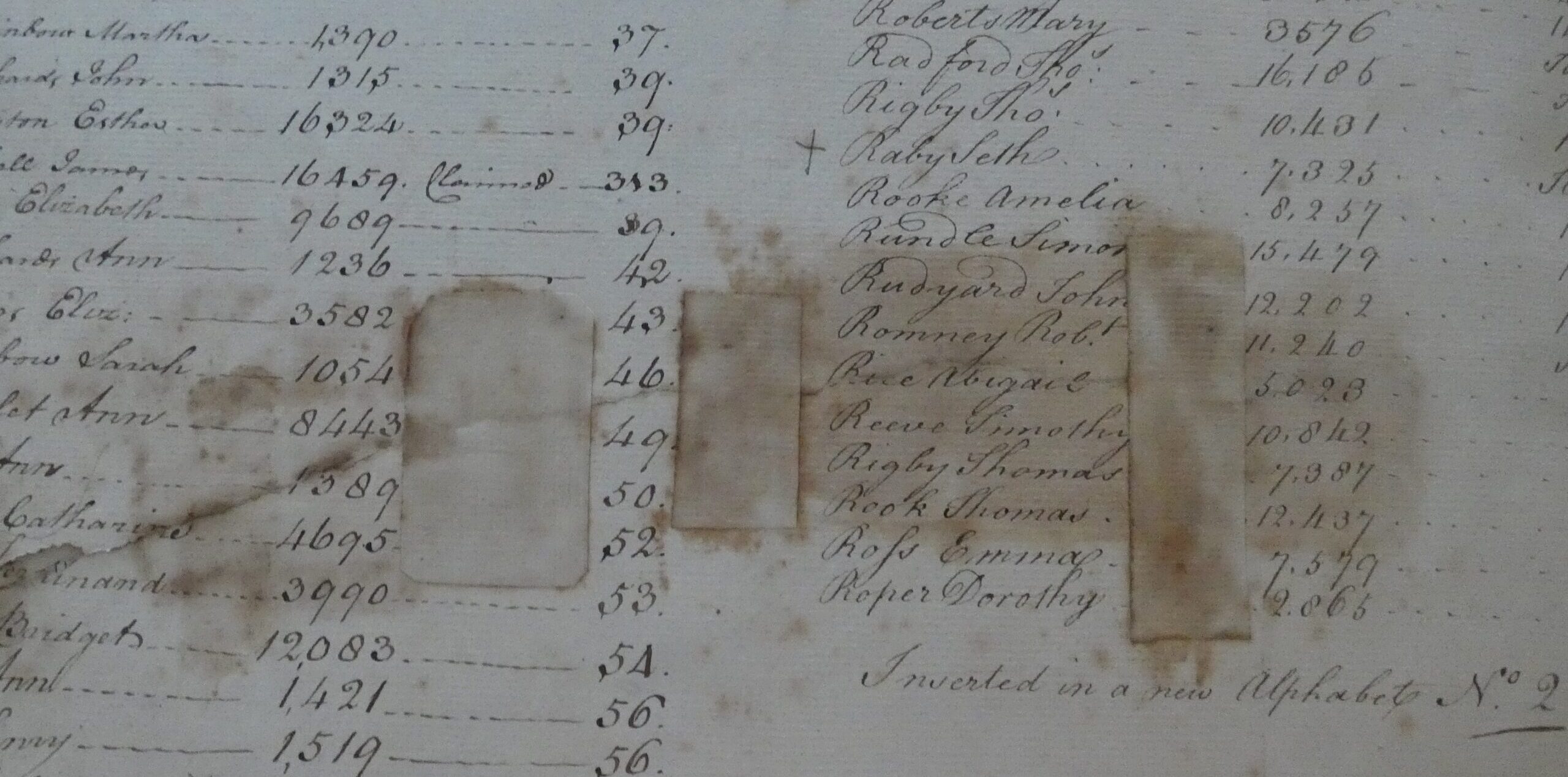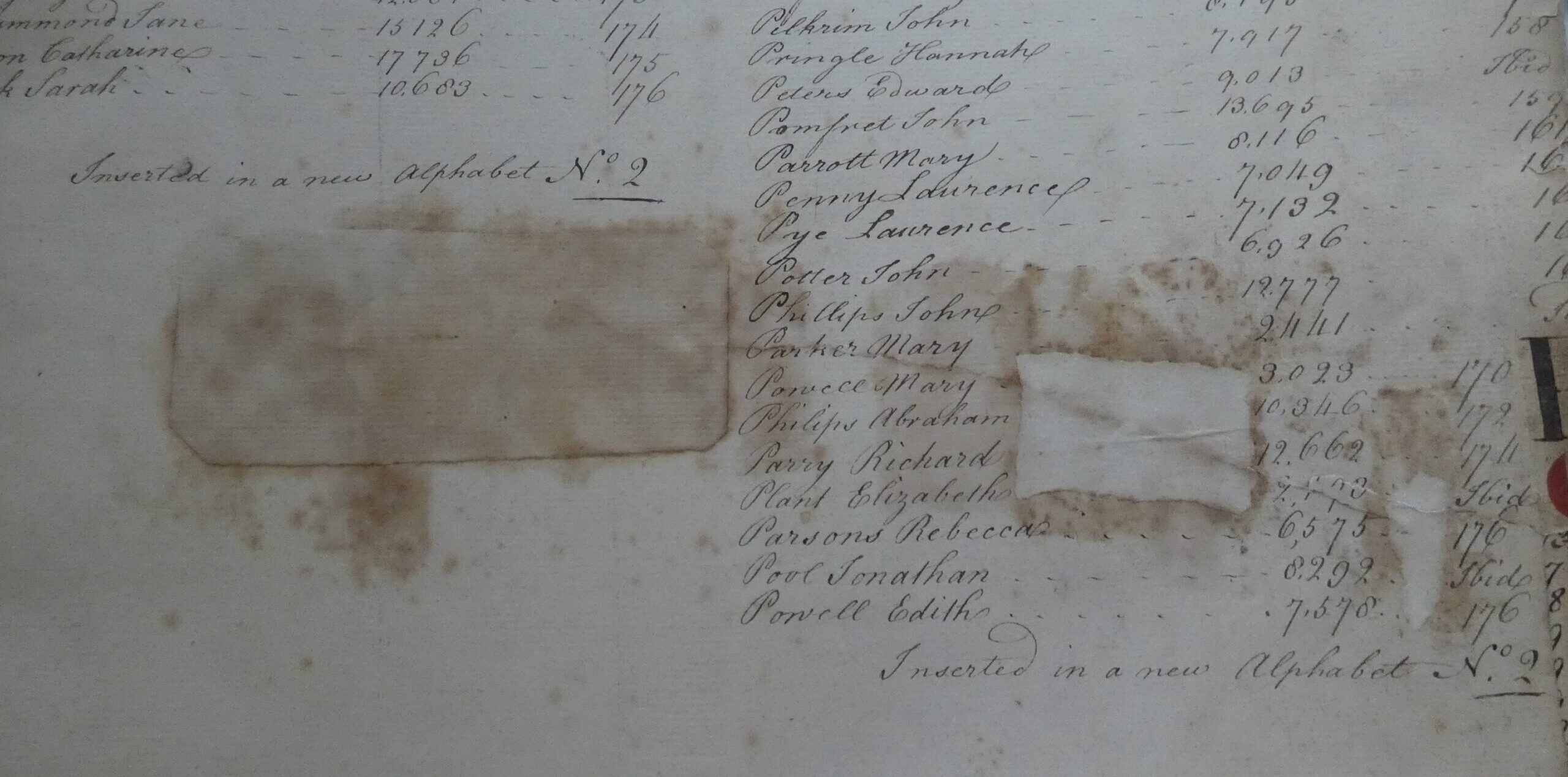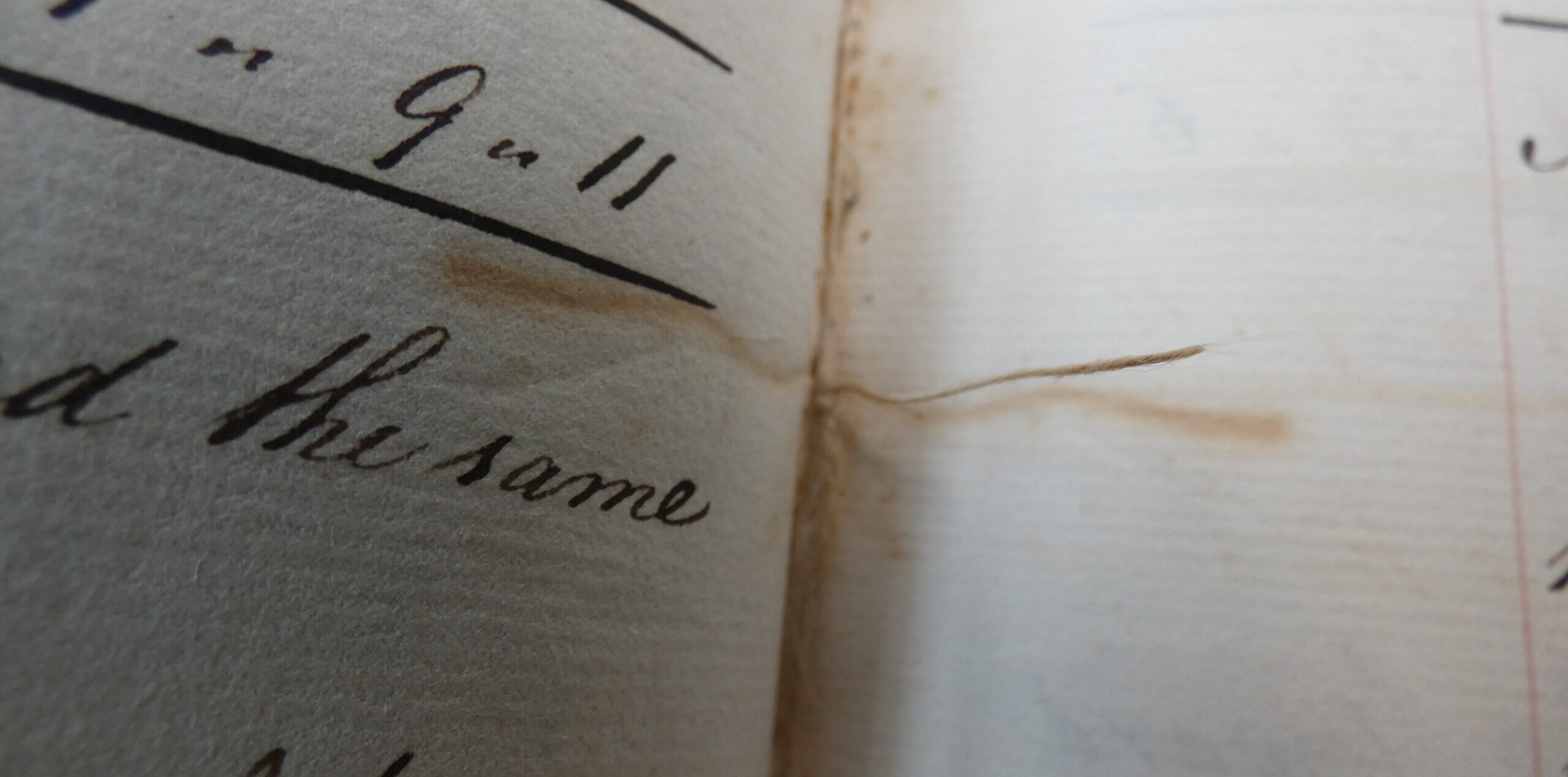Our fantastic conservators are busy in our archives, restoring our precious items so that they can be digitised for future generations. This blog series explores the finer detail of their work, in their own words.
There are different sources of acidity that cause degradation in paper and archival documents. One type happens when an acidic material has direct contact with paper and the acid ‘migrates’ to the paper and causes discolouration.
In the image above, the thread within the pages of a book has discoloured the paper, creating a shadow of the thread. This indicates the thread is acidic. As conservators, we recognise this as damage, but we will constantly evaluate whether there is greater risk to the paper if we leave it or if we intervene to repair it.
In the case of the thread, we know the discolouration of the paper indicates there is compromise to the stability of the paper. However, the paper is still robust, so leaving it alone is a far safer option than replacing it, which would essentially mean taking the whole book apart to re-sew it with acid-free thread.
Acid migration also happens between different papers that have been in contact with each other over a prolonged period of time. The images below show two sides of a page with historical repairs.
The repair paper patches (or the adhesive used in the repair) have deteriorated and caused staining on the adjacent paper. This tell us that those repairs are damaging the original paper. As these repairs are relatively easy to replace, we would typically choose to remove these and repair the tears with modern, non-acidic repair paper or Japanese tissue.




